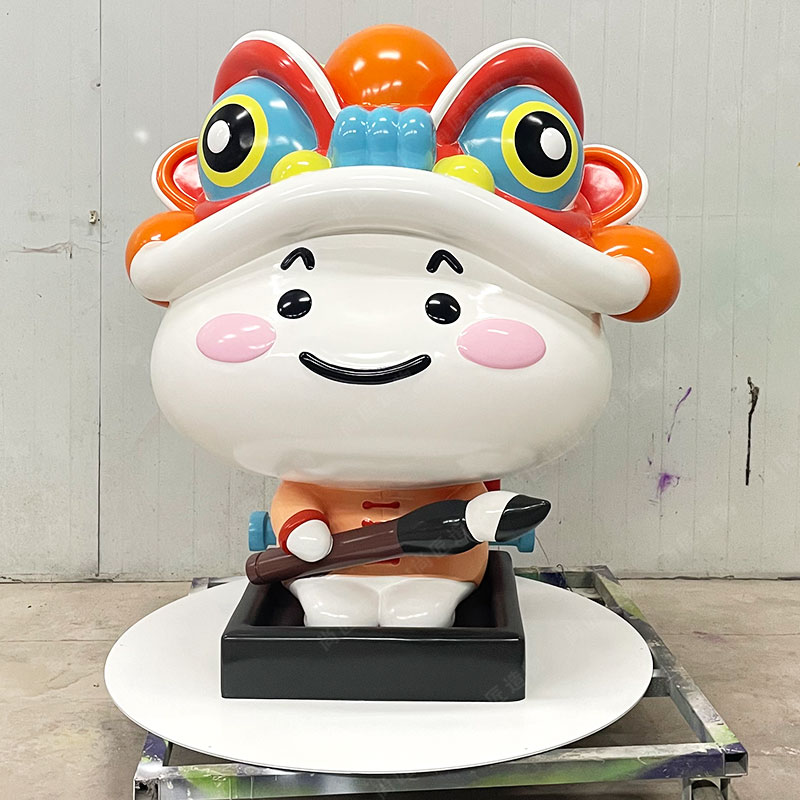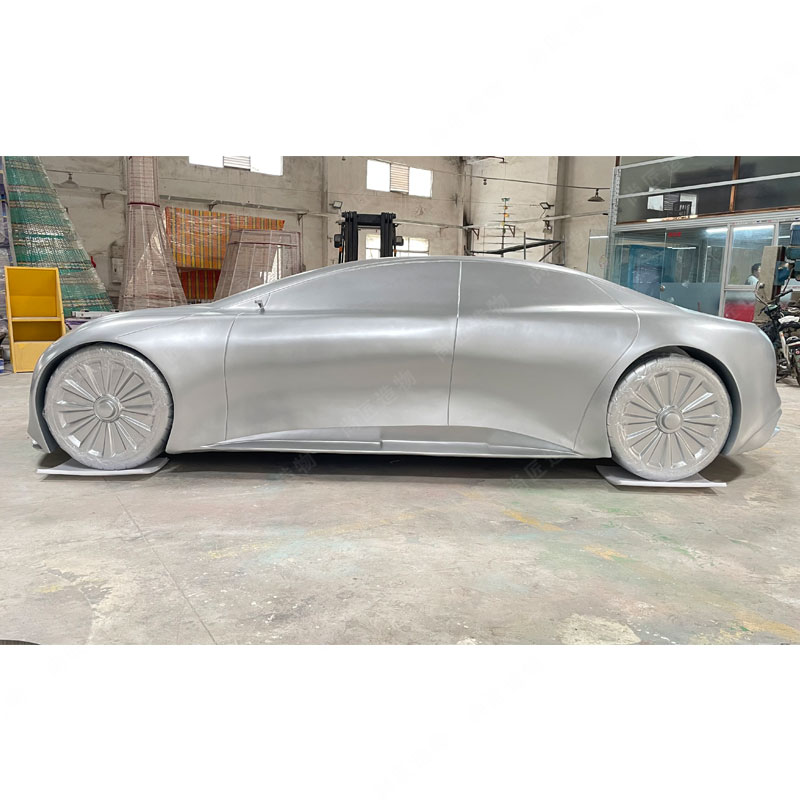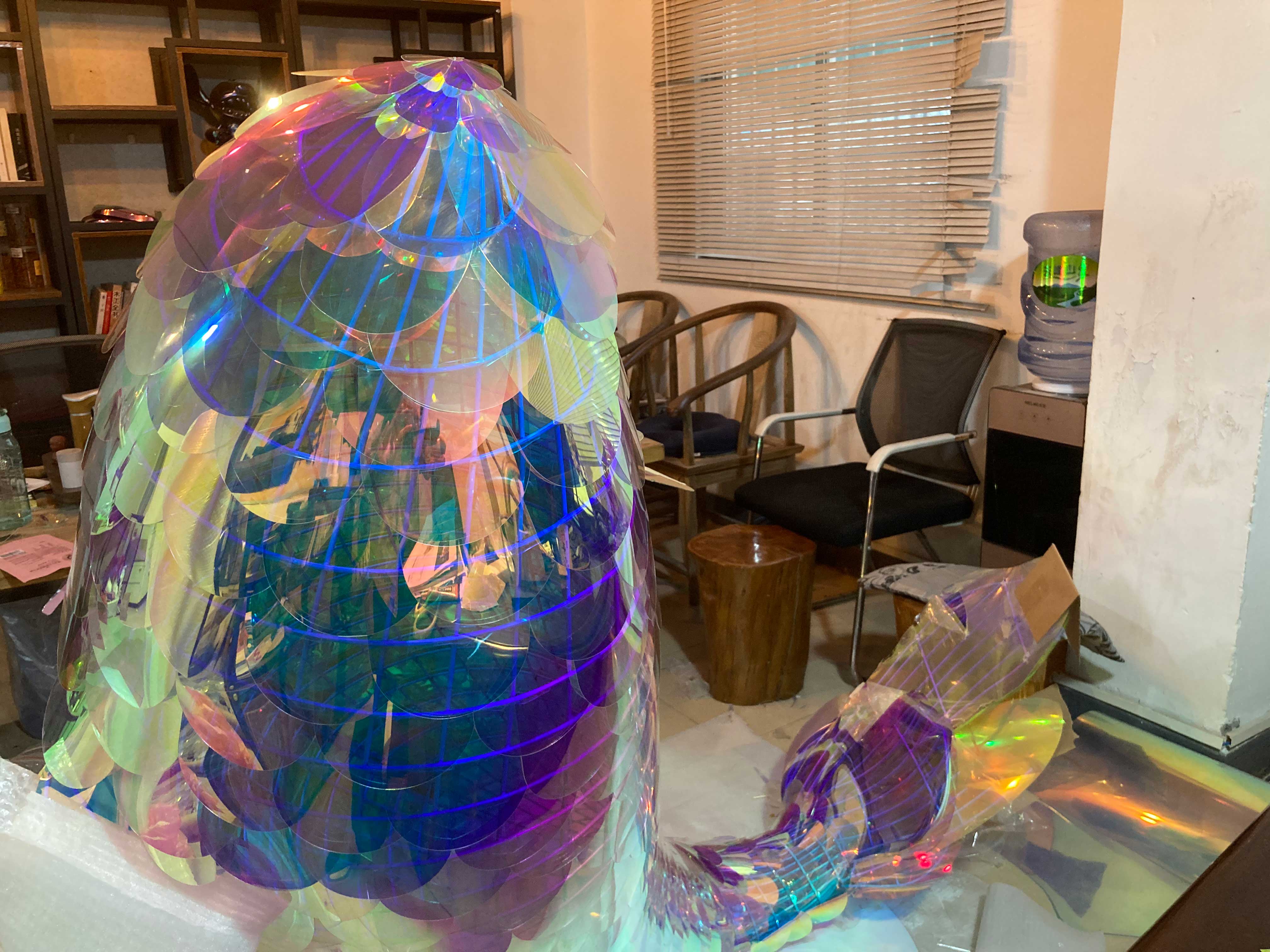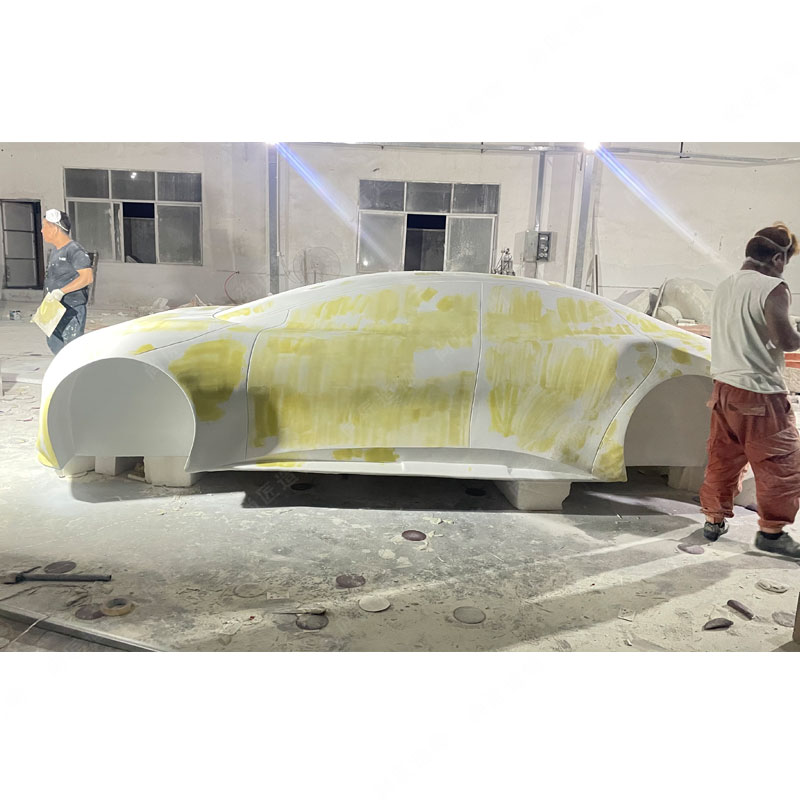Branded mascot sculptures effectively blend art and brand identity, using movement to create engaging experiences for viewers. These dynamic pieces not only capture attention with their vivid colors and imaginative shapes but also foster emotional connections through interactivity. The playful designs inherent in these sculptures invite audiences to explore and engage, transforming them from mere observers into active participants. The integration of kinetic elements illustrates a brand's values while making it memorable in a competitive marketplace. As artists continue to innovate within this form, the ability of these sculptures to convey both creativity and brand messaging remains a vital aspect of modern art and advertising strategies.
Exploring the Art of Movement: Branded Mascot Sculptures
Branded mascot sculptures are a fascinating blend of artistry and brand communication. These sculptures not only embody movement but also echo the essence of a brand's identity. They are designed to be visually striking, using vibrant colors and dynamic forms that catch the viewer's eye. By integrating kinetic elements, these sculptures draw audiences in, encouraging interaction and engagement. This approach transforms traditional static art into a lively conversation piece that embodies the spirit of both art and branding. Additionally, when strategically placed in public spaces or during events, these artworks stand out, making connections with potential customers and inviting them to explore the brand further. The playful nature of mascot sculptures makes them memorable; they are often crafted to reflect characteristics that resonate with consumers, enhancing recognition and fostering emotional connections.
| Feature | Description |
|---|---|
| Brand Representation | Reflects core values and personality of the brand |
| Interactive Design | Allows audience to engage with the sculpture |
| Visual Appeal | Bright colors and movement attract attention |
| Emotional Connection | Creates lasting impressions through relatable themes |
Through such dynamic designs, branded mascot sculptures become more than mere representations; they illustrate movement in both art and commerce.
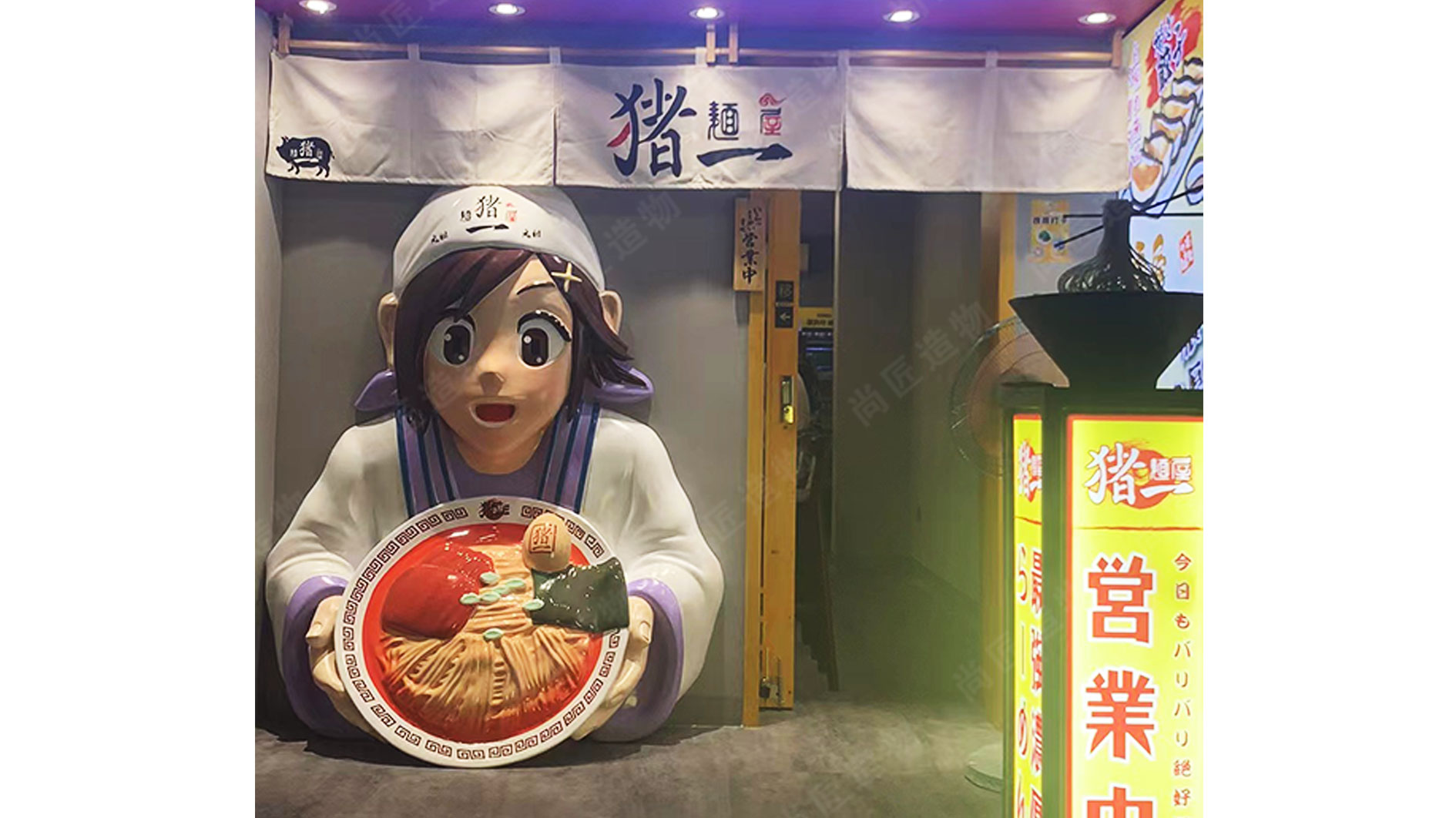
The Intersection of Kinetic Art and Brand Identity
Branded mascot sculptures uniquely blend kinetic art with corporate identity. These sculptures not only capture attention but also convey a brand's essence through movement. For instance, a flowing design may symbolize agility, while playful motions can reflect a lively brand personality. This interaction between art and branding creates an emotional connection with audiences, making the brand memorable.
"Art in motion can tell stories that resonate deeply with viewers."
The dynamic nature of these pieces invites engagement, encouraging viewers to experience the art interactively. This experience enhances brand recognition and loyalty. As businesses seek innovative ways to stand out, kinetic sculpture emerges as an impactful solution that illustrates a brand’s message in a vivid way. In today's market, where consumers value creativity and authenticity, integrating movement into branding strategies can provide a competitive edge.
For more insights on material choices in sculpture making, explore Stainless steel sculpture.
Dynamic Designs: How Mascot Sculptures Engage Audiences
Branded mascot sculptures captivate audiences by blending artistry with playfulness. These pieces often feature bright colors, imaginative shapes, and interactive components that encourage viewer interaction. For instance, many sculptures are designed to move or change shape, drawing attention and inviting people to engage with them. The dynamic elements not only reflect the brand's identity but also create a memorable experience for viewers. By incorporating movement, artists can evoke emotions and inspire curiosity, transforming passive observers into active participants in the art itself. This unique interplay of design and audience engagement marks a significant trend in contemporary art, ensuring mascot sculptures remain both relevant and impactful in their messaging. Additionally, Fiberglass sculpturematerials allow for intricate designs that enhance movement and durability.
Celebrating Creativity through Motion in Contemporary Sculpture
Branded mascot sculptures illustrate the synergy between creativity and motion, inviting audiences to engage actively with the artwork. These sculptures often use dynamic forms and colors to represent movement, reflecting both the energy of the brand and the creative process of the artist. The playful designs encourage spectators to explore different angles and perspectives, transforming static viewing into an interactive experience. By incorporating movement, these pieces break traditional boundaries in sculptural art, allowing for a richer connection with viewers. This interplay captivates not just through visual appeal but also by evoking emotions tied to nostalgia or brand recognition, making each sculpture a unique celebration of creativity. Such pieces serve as prime examples of how Realistic sculpturein contemporary art can encapsulate more than aesthetic value; they embody stories that resonate within individual experiences.
The Role of Playfulness in Kinetic Mascot Art
Playfulness is a key essence in kinetic mascot art, often serving as a bridge between art and audience engagement. These sculptures, with their lively forms and dynamic movements, invite viewers to experience a sense of joy and wonder. The interactive elements embedded within these artworks encourage participation, allowing people to interact with the sculptures in various ways. For instance, some may incorporate motion sensors that activate changes when viewers approach them, enhancing the playful nature of the experience. This interactivity often transforms passive observers into active participants, blending art with everyday life. Branded mascot sculptures not only captivate with their visual appeal but also foster a connection through humor and whimsy, making art accessible and enjoyable for diverse audiences. This focus on playfulness in design highlights how kinetic elements can elevate the viewer’s experience while reinforcing brand identity through positive emotional engagement.
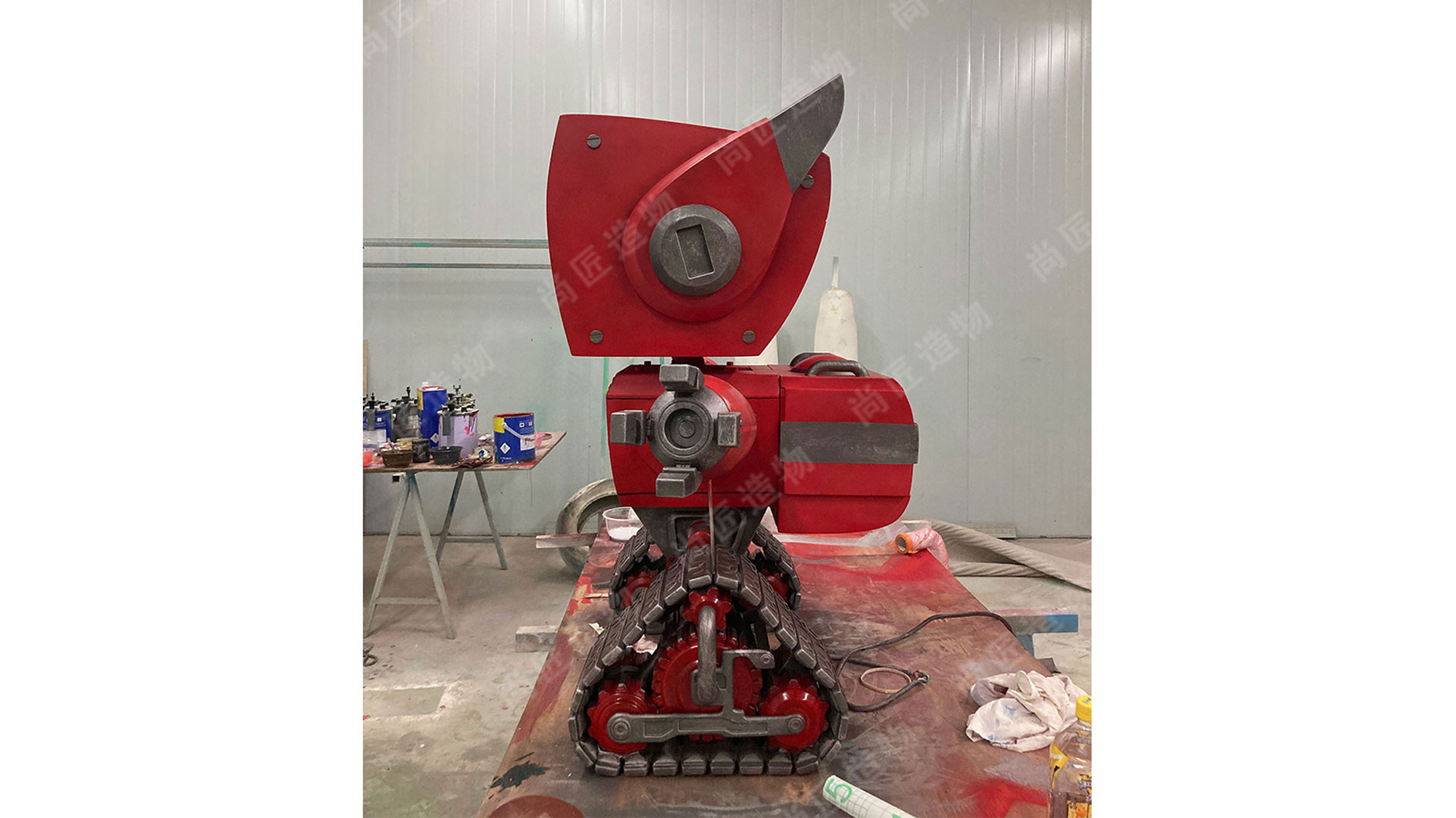
Interactive Elements in Branded Sculptures: Enhancing Experience
Interactive elements play a crucial role in making branded mascot sculptures more engaging for viewers. These features encourage audience participation, transforming passive observation into an active experience. For instance, some sculptures include movable parts that invite visitors to touch and manipulate them, creating a personal connection. Others may incorporate technology, such as motion sensors or augmented reality, which can bring the sculptures to life in unexpected ways. This interactivity not only enhances enjoyment but also deepens the viewer’s understanding of the brand's message. By fostering a sense of playfulness and curiosity, these elements help reinforce the dynamism inherent in kinetic art and elevate the overall impact of these unique sculptures. Learn more about how movement is used within this art form here: Kinetic sculpture.
Movement as a Medium: The Impact of Kinetic Art in Branding
Kinetic art plays a significant role in branding by creating dynamic visual experiences that capture audience attention. These moving sculptures evoke emotions and spark curiosity, making brands more memorable. When designed thoughtfully, kinetic pieces can represent a brand’s values and mission through their movement and aesthetics. For instance, a brand that emphasizes innovation might use fast, fluid motions in its mascot sculpture to symbolize progress and forward-thinking. Additionally, the interactive components of kinetic art invite viewer participation, further enhancing the connection between the audience and the brand. This relationship not only reinforces brand identity but also fosters loyalty as consumers feel engaged with the artwork. As companies move towards more creative branding strategies, incorporating kinetic art provides an opportunity to stand out in a crowded marketplace.
Crafting Dynamism: The Artistic Journey of Mascot Sculptures
Mascot sculptures represent a unique blend of artistry and branding, showcasing movement in ways that captivate audiences. Artists start with a vision, often inspired by the playful nature of mascots. This journey involves sketching initial concepts, focusing on how to best convey motion and personality. Materials chosen—whether metal, wood, or contemporary resins—play a crucial role in achieving the desired kinetic effects. Through careful planning and intricate craftsmanship, artists bring mascots to life, emphasizing features like flexible limbs or rotating elements that enhance the sense of movement. This artistic process not only highlights the physicality of the sculptures but also aligns with the brand's message, forging a deeper connection with viewers who engage with these dynamic works.
Conclusion
Branded mascot sculptures exemplify the intersection of art and commerce, celebrating movement while inviting audience interaction. Through their dynamic designs and playful elements, these sculptures engage viewers on multiple levels, enriching their experience with the art. The kinetic nature of these pieces not only reflects a brand's identity but also fosters emotional connections that enhance memorable encounters. As artists continue to push creative boundaries, the role of movement in sculpture will undoubtedly play a pivotal part in the evolving landscape of contemporary art and branding. By incorporating thoughtful designs and interactive features, branded mascot sculptures become powerful tools for engagement, making them relevant figures in the dialogue between art and commercialism.
FAQs
What are branded mascot sculptures?
Branded mascot sculptures are artistic creations that represent a company's identity through dynamic and playful designs.
How do these sculptures engage audiences?
They often incorporate interactive elements and vibrant colors, inviting viewers to participate and experience the artwork actively.
What materials are commonly used in creating these sculptures?
Materials like metal, fiberglass, and contemporary resins are frequently used to achieve the desired aesthetic and motion effects.
Why is movement important in these sculptures?
Movement captures attention and embodies the brand’s energy, helping create emotional connections with the audience.
Can you give an example of how movement symbolizes brand identity?
A flowing design might represent agility for a sports brand, while rhythmic motions can reflect fun for a youthful brand.
What role does playfulness play in branded mascot sculptures?
Playfulness enhances viewer enjoyment, making art accessible and encouraging interactions that foster consumer connections with the brand.
How do branded mascot sculptures contribute to marketing strategies?
They provide innovative visual experiences that stand out in crowded markets, amplifying brand recognition through engagement and creativity.
 ch
ch English
English

